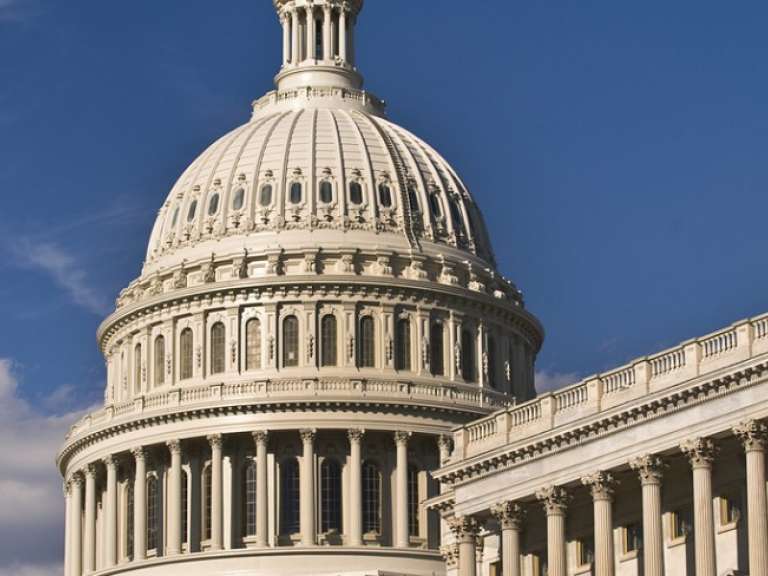Energy Policy in 2017: How Will the New Administration Impact the Power Sector?
Robert RapierDonald Trump's impact on energy policy in 2017 is unlikely to restore coal-fired power to its former status.

Donald Trump's surprising win in the 2016 presidential election left analysts scrambling to understand how the power sector might be impacted. His election could radically change the direction of energy policy in 2017.
Trump's choice of pro-fossil fuel and climate-change skeptic energy policy advisers signals that he's likely to attempt to roll back many environmental rules implemented under President Obama. In particular, regulations that negatively impact the coal sector could be targeted for elimination.
In 2011, the US Environmental Protection Agency finalized its Mercury and Air Toxics Standards (MATS) rule. This regulation, impacting 1,300 of the country's largest power plants, is designed to limit emissions of mercury and other toxic substances. MATS has been fought by opponents all the way to the Supreme Court, and although legal challenges continue, the implementation of MATS has been a major factor in the recent retirements of coal-fired power plants, as noted by the US Energy Information Administration.
A new rule hurting the outlook for coal is the Clean Power Plan (CPP), announced by the Obama Administration in August 2015. The CPP (like MATS, undergoing court challenges) requires a 32 percent cut in utility-sector carbon emissions from 2005 levels by 2030. Such a cut would make it difficult to build new coal plants in the US and would accelerate the decline of coal-fired power. The EIA's Annual Energy Outlook (AEO) 2016 estimated that under the CPP, 92 GW of coal-fired capacity will be retired by 2030. Without the CPP, the EIA projects that 60 GW of coal would be retired.
Another rule expected to work synergistically with the CPP was passed in December 2015, when President Obama signed a spending bill that extended tax credits for wind and solar power. Originally enacted in 1992, the Production Tax Credit (PTC) is a subsidy for electricity generated from renewable sources. The separate solar Investment Tax Credit (ITC) is a 30 percent federal tax credit for the capital cost of solar power systems. The ITC was due to expire at the end of 2016.
The new law called for the PTC for wind energy to remain in effect through 2016, but then gradually phases it out in 2017, 2018, and 2019 before final expiration in January 2020. The ITC for solar continues at 30 percent for commercial and residential systems through 2018; then it begins to phase out and settles at 10 percent in 2022. These subsidies are now due to sunset just before the first set of state compliance deadlines for the CPP come into effect in 2022.
To lead the EPA, Trump chose Oklahoma Attorney General Scott Pruitt, a harsh EPA critic. Pruitt has frequently sued the EPA over various carbon emissions and water pollution regulations affecting Oklahoma. The most likely regulation to be immediately targeted is the CPP because it is in the earliest stages of implementation.
A year ago the Supreme Court granted a request by 27 states and various companies and business groups to temporarily block implementation of the CPP. That sent the plan to the District Court for review, but it will likely head back to the Supreme Court this year. The simplest action from the Trump administration would be to decline to defend the plan in court.
However, if Trump succeeds in killing the CPP, 15 states have promised to fight him in court. Further, the effect of killing the CPP (as projected by the EIA), will be to merely slow down the rate of retirements of coal-fired power plants. This is because in many cases, the switch from coal to natural gas and renewables is being driven by factors beyond federal regulations. Specifically, economic factors and state regulations are encouraging this shift—with many states already well ahead of the carbon dioxide reductions specified by the CPP. To date, 29 states have adopted renewable portfolio standards that require utilities to sell a certain amount of renewable electricity.
Trump was critical of solar and wind power at times while campaigning. He also fought against an offshore wind project near his golf resort in Scotland. Thus, it is unlikely that during his administration there will be support for new subsidies for wind and solar power. This may slow the growth trajectory of these renewables, but the existing tax credits are already scheduled to be phased out and are, therefore, less likely to be targeted for elimination.
With MATS, utilities didn't have the luxury of a decade to comply, so many coal-fired power plants were retired even as the regulation was fought in court. It is unlikely that the Trump administration will have success in reversing those actions.
Trump is planning to change the direction of energy policy in 2017. Environmental regulations will be targeted for repeal, but many of the factors that have resulted in the shift from coal to natural gas in the power sector will remain in place regardless of presidential policies. The primary driver there has been economic. Wind farms and solar projects are being built at prices competitive with coal. Low natural gas prices over the past two years favored a switch away from coal, and this year, rising natural gas prices will probably result in some movement back toward coal. Coal's fortunes look slightly better under a Trump administration, but is unlikely to retain its former status.
The EIA estimated that coal will overtake natural gas in power production this winter. Are these simply seasonal power generation trends?
The future of gas generation will by shaped by its relationship to renewables, regulations to keep costs down, and new drilling technologies.
The falling costs of grid-scale energy storage batteries affect the gas turbine market. What does the effect look like?